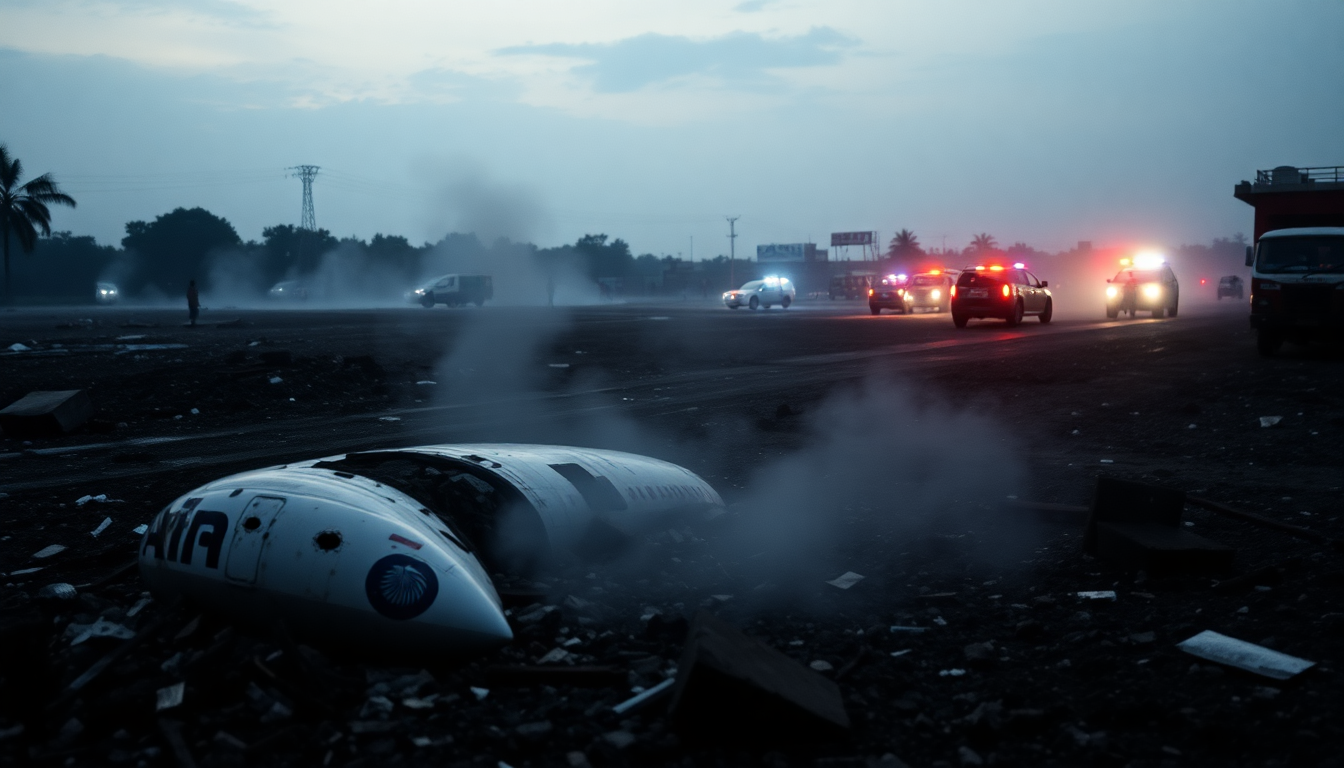Table of Contents
Imagine boarding a plane, ready to whisk away on an adventure, only to find yourself part of a tragic statistic. That’s the grim reality faced by over 240 souls on an Air India flight that went down in Ahmedabad. Yes, you read that right—an Air India flight, a name that’s supposed to represent safety and reliability, suddenly turned into a harbinger of disaster.
What the hell happened?
The crash: a chaotic scene unfolds
Local television channels bombarded viewers with images that would make anyone’s stomach churn. Smoke billowed from the wreckage, painting a horrifying picture in what was supposed to be a vibrant city.
Firefighters were left scrambling, trying to extinguish the flames that engulfed the remnants of the aircraft and an adjacent building. Is this the kind of news we expect from a burgeoning aviation industry? Not a chance.
Witnesses reported seeing charred bodies scattered around like discarded puppets in a twisted play.
British Prime Minister Keir Starmer didn’t hold back in expressing the horror; he described the scenes as “devastating.” But honestly, what else can be said when tragedy strikes? Words are just words when lives are lost.
The passengers: a diverse group caught in tragedy
Onboard were 242 passengers and crew, a mix that included 169 Indians, 53 Britons, seven Portuguese, and one Canadian. It’s like a twisted joke—an international flight that turned into a global tragedy. Faiz Ahmed Kidwai, the director general of civil aviation, stated that the flight, a Boeing 787-8, crashed just five minutes after takeoff.
Five minutes! That’s hardly enough time to even get comfortable in your seat. And the fact that the plane was fully loaded with fuel? Talk about adding fuel to the fire—literally.
Reactions and support: a nation in shock
India’s Civil Aviation Minister, Ram Mohan Naidu Kinjarapu, took to social media to announce that all efforts were being made to provide medical aid.
But really, what can be done when the damage is already done? Boeing, the giant of the aviation world, acknowledged the crash but was still “working to gather more information.” Gather more information? How about gathering a better safety record while you’re at it?
Air India’s chairman, Natarajan Chandrasekaran, expressed his shock and sorrow, stating that the primary focus was on supporting the affected families. But here’s a kicker: how much support can be offered when the families are left with grief and unanswered questions? Sympathy doesn’t bring back loved ones, does it?
The impact on British-Indian relations
British Cabinet minister Lucy Powell assured that the government would provide all the support it could to those affected. But will that be enough? With nearly 1.9 million people of Indian descent in the UK, the emotional toll is staggering. Families across the globe are now linked by tragedy, and the question lingers: why do such disasters keep happening?
Reflecting on aviation safety
The last major crash in India was in 2020, and the worst air disaster, which claimed 349 lives, happened back in 1996. Yet here we are in 2025, still grappling with the same horrifying reality. Are we really making progress, or are we just putting band-aids on a gaping wound? It’s a rhetorical question, but one worth pondering as we watch the investigation unfold.
As the world watches this tragic event, let’s not kid ourselves. The aviation industry has work to do. Families are shattered, lives are forever altered, and the question remains: when will it be enough? When will we prioritize safety over profit? The clock is ticking, and the world is waiting.





